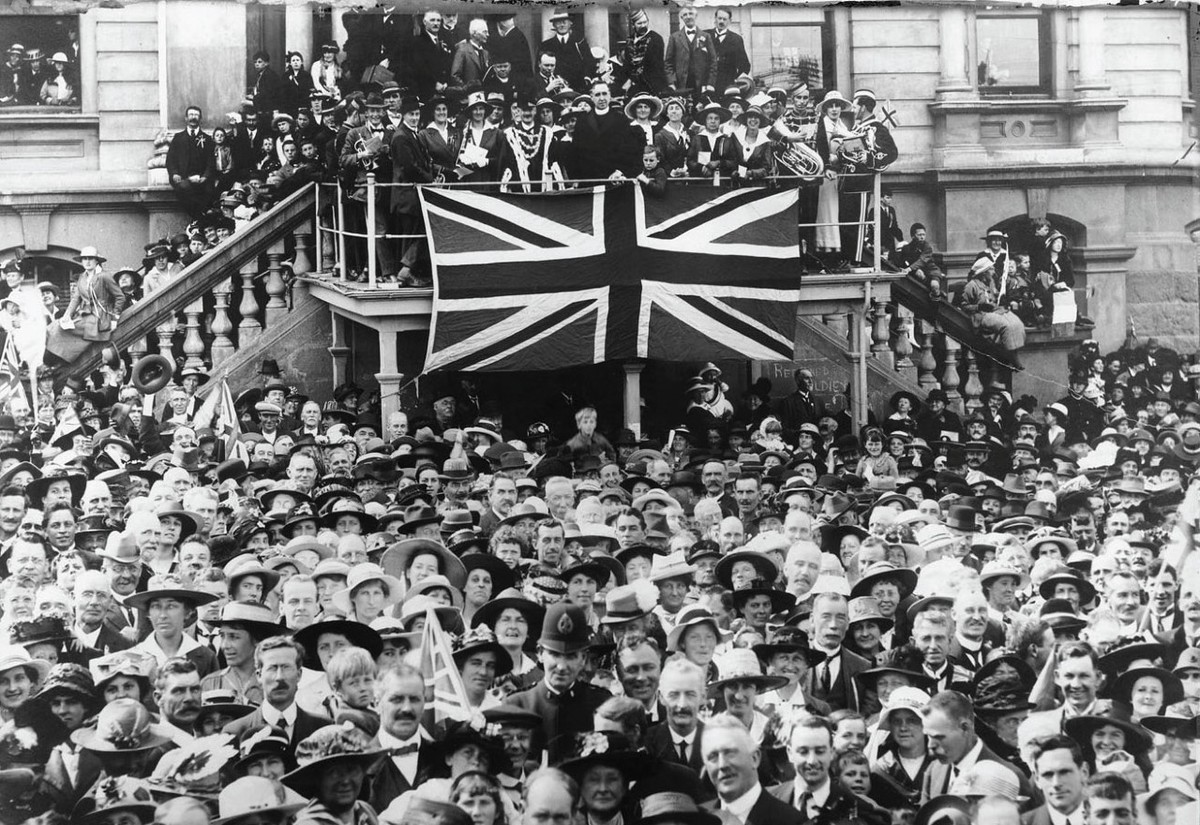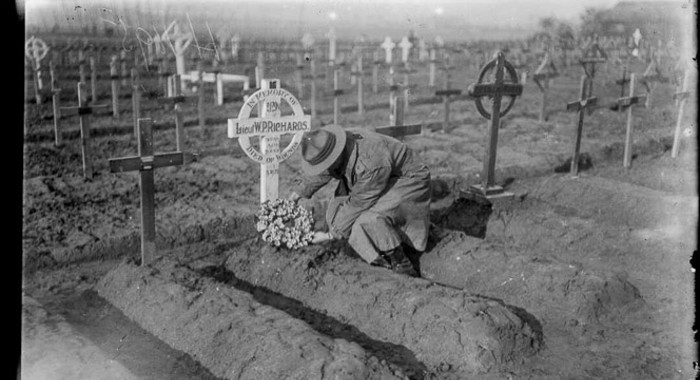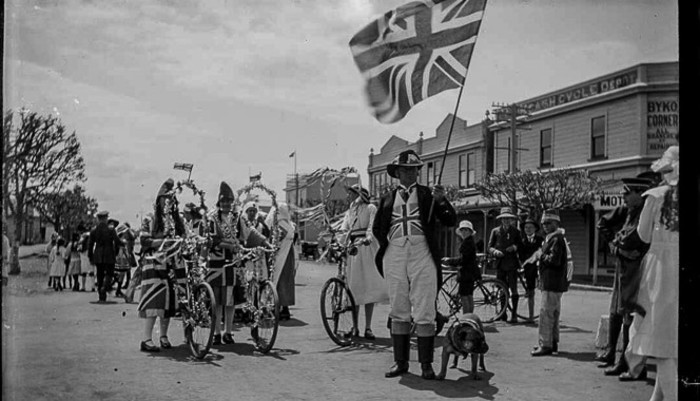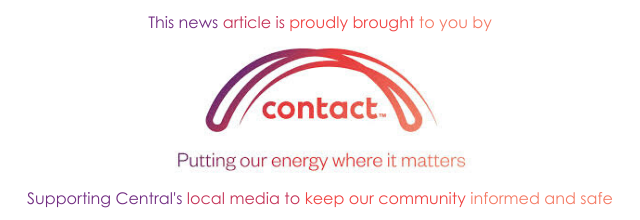Armistice Day: Commemorating the past
Rowan Schindler
10 November 2020, 6:00 PM
 Armistice Day Celebrations at Municipal Chambers, 1918. DCC Archives Photo 206/1.
Armistice Day Celebrations at Municipal Chambers, 1918. DCC Archives Photo 206/1.On this day in 1918 — on the 11th hour of the 11th day of the 11th month — World War One officially ended.
Today, Armistice Day, continues to be commemorated to honour the war which marked the end of imperialism, the reshaping of Europe and the beginning of modern history which continues to be written to this day.
Eerily, there are similarities with then and now, most notably the political and social changes underway as well as a global pandemic then and now.
World War One was the first conflict among industrialized global powers and killed 10 million soldiers and wounded over 21 million more.
A war which started from the assassination of an Austrian Archduke at the hands of Serbian nationalists, and through a tangle of alliances and treaties, would pull Kiwi soldiers across the world to fight in places such as Belgium, France and Turkey.
The commemoration of the end of the conflict is a reminder of the futility of war and the sacrifices made by millions across the globe.

An Auckland officer placing a wreath on the grave of Lieutenant W. P. Richards, near Abeele, France. Henry Armytage Sanders. Alexander Turnbull Library. Ref:1/2-013744-G Copyright unknown.
A week before the armistice, on November 4, 1918, New Zealand troops liberated the French town of Le Quesnoy. About 80 New Zealand soldiers were killed that day– almost the last of the 12,483 who fell on the Western Front between 1916 and 1918.
Dylan Owen, writing for the National Library, said across Europe, news of the end of hostilities was greeted mostly with exhausted relief by soldiers.
“On New Zealand’s home-front, feelings were similar. Every community across both motu had suffered terribly from the deaths of local men fighting overseas.
“The loss of New Zealand soldiers in 1918 had continued unabated. In fact, over 5300 New Zealand troops died in 1918 — more than any other year of the First World War including the 1915 Gallipoli campaign.”
On the declaration of the armistice on November 11, 1918, 52,123 New Zealand troops were serving overseas, including 24,115 in France, 23,541 in England and 4451 in Egypt.
The New Zealand Division official history records those in France received the news of the armistice ‘generally in a matter of fact way, totally devoid of any demonstration of emotion.
A Divisional Service of Thanksgiving was held on 14th November.’
Most of these troops then faced a long march across north-east France and Belgium to join the Allied Army of Occupation of Germany.
On December 20, the first New Zealand formation, the 2nd Brigade, crossed the River Rhine into Cologne.
Many of the New Zealand soldiers who had been training or recuperating in England took part in local armistice celebrations, parading in London and displaying captured German guns at the Lord Mayor’s Show.
At home in New Zealand, news of the armistice was greeted with joy and celebration on November 11 and 12.
Wellington, according to one newspaper, was turned into a city of boundless joy as wide as the world. So much so that ‘desks, benches, and counters were soon deserted.’
There were songs and cheers in the streets across the country, as the nation, regardless of background, class or occupation, came together with one mind.
On November 12, Prime Minister William Massey read out the armistice terms. Parliament then adjourned and official and unofficial celebrations were held across the city.
Smaller centres like Naseby and Levin also celebrated the armistice with singing and street processions, including people in fancy dress.
In Naseby, a large bonfire was lit under an effigy of the Kaiser which someone had placed a bomb inside. It eventually exploded, blowing off the Kaiser’s head.
North in Horowhenua, there was similar jubilation — and another bomb. However, this one was German. A mine had washed up on the beach near Otaki and numerous sightseers had arrived to see and also handle it.
It was claimed the German mine resembled the head of the Kaiser.

Group including 'John Bull' in fancy dress during the Armistice Day celebrations in Levin. George Leslie Adkin. Alexander Turnbull Library. Ref: 1/4-023268-G Copyright unknown.
For some communities, celebrating the armistice was complicated by a deadly sting at the war’s end, with local newspaper reports of people dying from influenza.
Returning soldiers carried a deadly strain of influenza, known as the Spanish Flu, which killed over 8,500 New Zealanders.
Then and now, past and present, are eerily linked by the two pandemics.
In Samoa, it was catastrophic. Around 8,500 Samoans died — over 20% of the population at the time.
In New Zealand, the ‘scourge’ forced the closure of shops, theatres, public buildings, and halted public functions celebrating the war’s end. In Christchurch, thanksgiving church services were also banned.
Even smaller rural communities, especially Māori, found themselves deeply affected. Queenstown’s Children’s Day celebrations were postponed indefinitely as a result of the influenza epidemic.
On November 13, Native Land Agent Ben Keys noted in his diary:
“News came at 9 o’clock yesterday morning of the capitulation of Germany ... There was considerable rejoicing all morning but the town (Rotorua) rapidly quietened down towards midday. People are afraid of the influenza scourge, and do not like to congregate …
“About 2 o’clock yesterday the soldiers besieged the Grand Hotel, and threatened to break in, so the management had to roll out a big cask of beer for them, to avert a riot …
“Rejoicing for Peace, and fear of the epidemic, are blending in a curious and pathetic manner. In Auckland, it seems, all public functions have been postponed, and probably the main celebrations here will be allowed to stand over for a time.”
Appvertising

